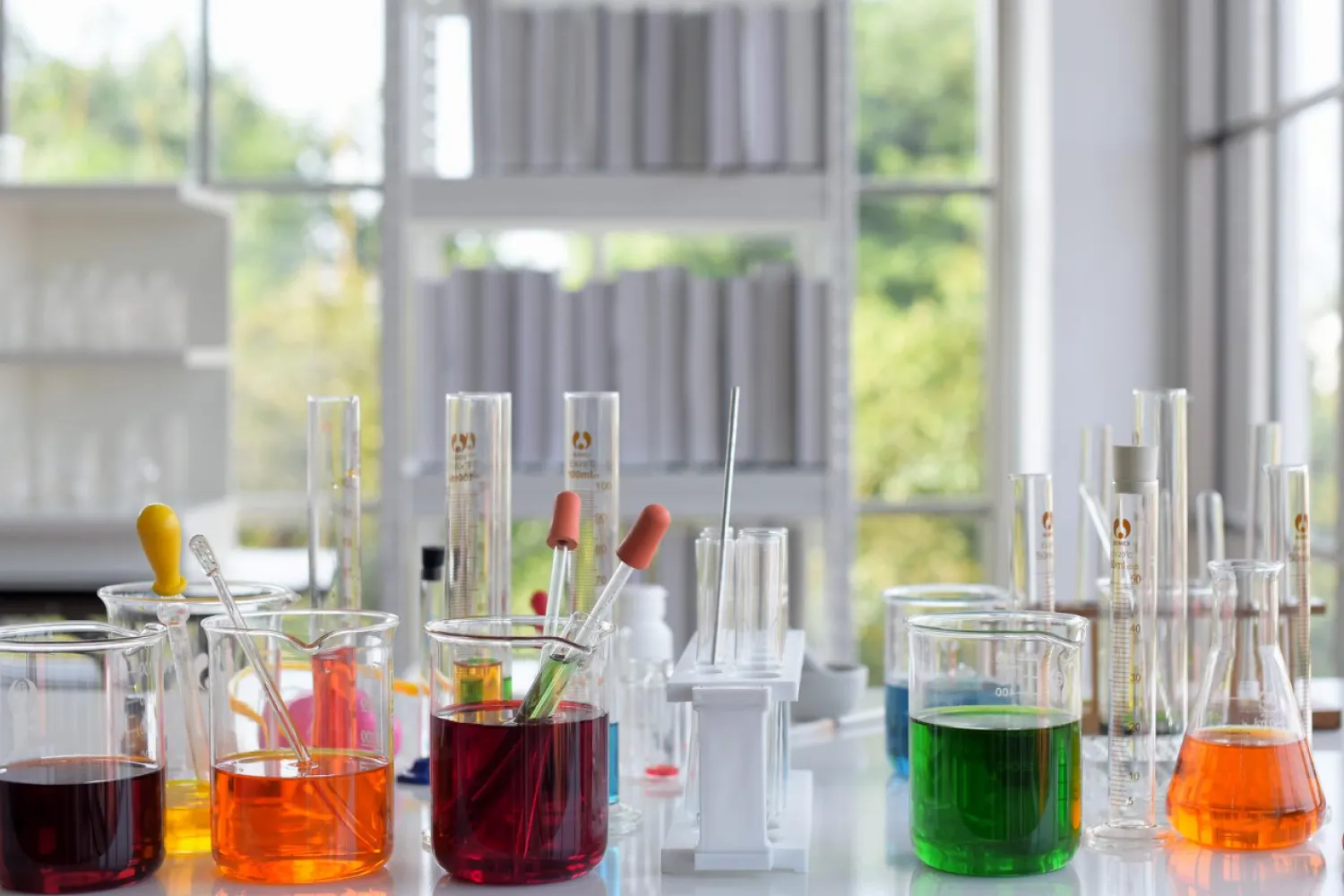The Future of Laboratory Chemicals: Challenges and Opportunities
How are laboratory chemicals facing opportunities as well as challenges as a part of the future and result of growing safety and environmental regulations?
The chemistry that underpins science is changing more quickly than ever before. The need for safer, more intelligent and sustainable chemicals is changing the basis of laboratory work in both industrial testing facilities and research labs. However complexity is a consequence of innovation.
Technological advancements, new safety standards and environmental requirements are changing the rules governing laboratory operations. We now need to consider how we source, handle and innovate with chemicals in addition to what chemicals we use.
Table Of Contents
Growing Difficulties In Laboratory Chemicals
Increased Safety and Adherence to Regulations:
- High safety standards must be met by labs nowadays.
- The rules governing the use of recycling/disposal labeling storage and purity of chemicals are getting stricter.
- International standards like ISO OSHA and REACH must be followed by labs doing business internationally.
- As a result lab supervisors face significant challenges in training personnel understanding and adhering to new regulations and documenting all agreements.
- Cost time management and lab operations efficiency are also impacted.
- But there is also a chance for dependable safe and legal lab operations because of this challenge.
- Labs can increase operational efficiency, safety and dependability as well as get ready for future regulatory changes by following the rules.
The Effects on the Environment and Sustainability:
- The sustainability and environment are significantly impacted by the use of laboratory chemicals.
- Lab water runoff soil contamination and the simple and unscientific breakdown of chemicals all have an impact on the environment and water supplies.
- Plastic packaging conventional chemical formulations production techniques and basic recycling systems are all lacking.
- This turns into one of the biggest problems with lab operations.
- Green chemistry reusable packaging and the transition to sustainable chemical formulations also open up new possibilities.
- Labs can preserve the environment while conducting long-term profitable and sustainable operations if the proper steps are taken.
Cost and Supply Chain Volatility:
- A significant problem for labs is the fluctuating costs of equipment and chemicals as well as the unpredictability of the global supply chain.
- Operating expenses and time management are greatly impacted by delayed raw material availability, growing import-export expenses and international trade restrictions.
- Problems with the supply chain have caused labs to experience delays in receiving necessary chemicals and occasionally even non-usable items.
- In this scenario labs must accurately manage pricing and budget controls, plan ahead and identify backup supply channels.
- Through local production improved distribution networks and clever inventory control this challenge also creates new opportunities. Labs can capitalize on these opportunities to ensure operational efficacy and cost control.
The Evolution of Technology and the Shift to Digitalization:
- Due to the time-consuming and error-prone nature of manual recording and handling digital systems are safer and more efficient.
- However labs struggle to adapt to new technologies.
- Costs, the requirement for employee training and data security issues could all be obstacles to this change.
- At the same time digital lab systems open up new possibilities for resource management control stock tracking safety and operational efficiency.
Emerging Opportunities In The Industry
Green Chemistry’s Rise:
- Green chemistry’s ascent is one of the most significant developments in lab chemicals’ future.
- Chemical compounds with low toxicity, environmental friendliness and recyclable properties are now major forces behind industrial and research endeavors.
- Green chemistry has become a new possibility as traditional chemicals and hazardous particles pose problems for the environment and human health.
- Green chemistry offers labs advantages in terms of long-term experiment reliability, cost control, a safe environment and sustainable operations.
- This enables labs to anticipate upcoming technological advancements and changes as well as to meet new observations and standards.
Digital Integration and Smart Laboratories:
- With technology today’s labs are evolving into smart labs.
- Safety monitoring inventory tracking and chemical management can all be enhanced by digital integration.
- This helps reduce manual records and operational errors and increases operational efficiency.
- Transitioning to new technological systems however is not without its difficulties.
- Data security concerns employee training requirements and expensive equipment necessitate new upfront planning and investments.
- However digital labs also offer opportunities to enhance laboratory operations sustainability efficiency and safety.
- In addition to reducing risks and unnecessary costs cloud-based data management automation and sensor systems help labs prepare for future demands.
Education and the Acquisition of Skills:
- Education and staff training are two key factors affecting the future development of lab chemistry.
- Everyone working in the lab should receive training on new technologies, green chemistry practices and safety regulations.
- Ignorance of safe chemical handling digital tracking systems and proper labeling can lead to accidents, incorrect experiments and decreased operational efficiency.
- By using performance monitoring certification programs and staff training institutions can overcome this obstacle and guarantee safe and effective lab operations.
- Employees can also learn new technologies and chemical testing techniques through this training which could improve lab operations quality and innovation.
Tips For How To Get Your Lab Ready For Upcoming Trends.
- Utilize digital tools to monitor chemical usage inventory and labeling in an environmentally responsible manner.
- Training in digital tools, green chemistry practices and safety should be provided to staff members.
- Use recyclable packaging and eco-friendly low-toxicity chemicals.
- Priority should be given to local production of the chemicals the lab requires in order to reduce ordering time and cost.
- Install technological solutions that reduce manual error rates and increase operational efficiency.
- Stay up to date on new developments in technology green chemistry practices and research and be prepared for sudden changes in the laboratory.
FAQ
The main obstacles are the need to comply with strict safety regulations, protect the environment, control costs and supply chain volatility and transition to digital technology.
Integrating digital tracking systems, making sure employees are trained, embracing green chemistry procedures taking into account local production, putting automation technology into place and maintaining compliance are all essential methods.
Using healthier and less hazardous chemicals can make lab operations safer and more sustainable. Green chemistry opens up new avenues for communication.

